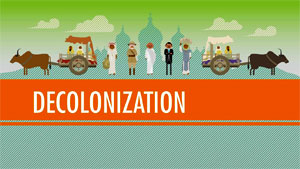The history of decolonization in India is polarized on the question whether freedom was seized by the Indians or power was transferred voluntarily by the British. Comment. (250 words)
Sakshi Education
By Srirangam Sriram, Sriram's IAS, New Delhi.


The historiography of decolonization in India, as historian Howard Brasted and Carl Bridge point out, is polarized on the question whether freedom was seized by the Indians or power was transferred voluntarily by the British as an act of positive statesmanship.
The constitutional arrangements of 1919 and 1935 were meant to secure British hegemony over the Indian empire through consolidation of control over the central government, rather than to make Indians masters of their own affairs. Even in the 1950s, the British foreign office and colonial office were contemplating ways and means of protecting economic and strategic interests in Asia and Africa against the recent upsurge of nationalism.
There was, however, an acknowledgement that in view of the rising tide of political resistance it would be impossible to reverse the constitutional process that inevitably gravitated towards the demission of empire. So, it is unlikely that British left India voluntarily in 1947 in pursuance of a well-designed policy of decolonization or that freedom was a gift to Indians.
When world war two broke out, India was considered to be the most important strategic point for the defence of the British Empire in the Middle East and Southeast Asia. So Britain’s major concern was to mobilize Indian agricultural, industrial and manpower resources to war efforts and for that reason to maintain a strong grip over Indian affairs. In this background, Cripps mission came to India and promised Indian self-determination after the war, but it failed. The Quit India movement, its brutal repression, Bengal famine and wartime food scarcity damaged the moral foundations of the Raj.
The post-world war global order including the worldwide anti-imperialist sentiments, UN charter, and financial dependency of Britain on U.S. made empire morally indefensible. By this time, India became less manageable as a colony –it could only be kept under control at a heavy cost, both financial and military. Britain’s debt to India was increasing and pressure from Indian nationalists increased for more resources for development of their own country.
 The Labour government formed in Britain in 1945, which had committed itself to Indian independence but what it offered was the dominion status. Subsequent developments towards a rapid withdrawal were only in response to the political situation in India, which considerably narrowed down the available options.
The Labour government formed in Britain in 1945, which had committed itself to Indian independence but what it offered was the dominion status. Subsequent developments towards a rapid withdrawal were only in response to the political situation in India, which considerably narrowed down the available options.
British decision to quit was partly based on the ungovernability of India in the 1940s. It is difficult to argue that there was a consistent policy of devolution of power, which came to its logical culmination in August 1947 through the granting of self-government in India.
The constitutional arrangements of 1919 and 1935 were meant to secure British hegemony over the Indian empire through consolidation of control over the central government, rather than to make Indians masters of their own affairs. Even in the 1950s, the British foreign office and colonial office were contemplating ways and means of protecting economic and strategic interests in Asia and Africa against the recent upsurge of nationalism.
There was, however, an acknowledgement that in view of the rising tide of political resistance it would be impossible to reverse the constitutional process that inevitably gravitated towards the demission of empire. So, it is unlikely that British left India voluntarily in 1947 in pursuance of a well-designed policy of decolonization or that freedom was a gift to Indians.
When world war two broke out, India was considered to be the most important strategic point for the defence of the British Empire in the Middle East and Southeast Asia. So Britain’s major concern was to mobilize Indian agricultural, industrial and manpower resources to war efforts and for that reason to maintain a strong grip over Indian affairs. In this background, Cripps mission came to India and promised Indian self-determination after the war, but it failed. The Quit India movement, its brutal repression, Bengal famine and wartime food scarcity damaged the moral foundations of the Raj.
The post-world war global order including the worldwide anti-imperialist sentiments, UN charter, and financial dependency of Britain on U.S. made empire morally indefensible. By this time, India became less manageable as a colony –it could only be kept under control at a heavy cost, both financial and military. Britain’s debt to India was increasing and pressure from Indian nationalists increased for more resources for development of their own country.
 The Labour government formed in Britain in 1945, which had committed itself to Indian independence but what it offered was the dominion status. Subsequent developments towards a rapid withdrawal were only in response to the political situation in India, which considerably narrowed down the available options.
The Labour government formed in Britain in 1945, which had committed itself to Indian independence but what it offered was the dominion status. Subsequent developments towards a rapid withdrawal were only in response to the political situation in India, which considerably narrowed down the available options. British decision to quit was partly based on the ungovernability of India in the 1940s. It is difficult to argue that there was a consistent policy of devolution of power, which came to its logical culmination in August 1947 through the granting of self-government in India.
Published date : 30 Oct 2020 03:21PM






